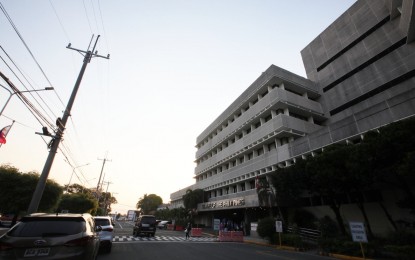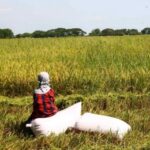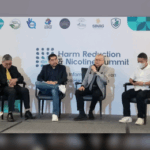MANILA – Amid worsening flooding and recurring natural calamities, three senators pushed for a stronger, more coordinated approach to disaster preparedness, highlighting the need for systemic reforms in flood control, waste management, and emergency response.
Senate leaders each called for immediate and strategic action, saying fragmented solutions and lack of enforcement have allowed the country’s flood and disaster risks to worsen.
One senator renewed his push for the creation of a Department of Disaster Resilience (DDR) and the establishment of disaster food banks nationwide. He said the two measures are designed to improve long-term planning, coordination, and aid delivery during emergencies.
“Disaster resilience begins long before the typhoon hits or the ground shakes. It starts with smart planning, readiness, and rapid response capabilities. With the creation of the Department of Disaster Resilience and the establishment of local food banks, we can ensure that no citizen is left behind in times of need," he said.
Under the proposed Disaster Resilience Act, the DDR will lead national and local disaster risk reduction and response efforts, including early warning systems, recovery programs, and coordination with local government units.
Meanwhile, the proposed Disaster Food Bank and Stockpile Act seeks to establish calamity-proof warehouses stocked with food, water, and emergency supplies to speed up aid deployment.
Another senator called on the government and public to strictly enforce waste management laws, stressing that clogged waterways are largely to blame for flooding in urban centers.
“Separate biodegradable from non-biodegradable waste. Do not use single-use plastics. Don’t throw plastic, bottles, and cans on the streets, near houses, or in illegal dumpsites," she said.
She noted that many canals and rivers are filled with garbage, while waterways are being blocked by illegal structures, making floods worse and drainage ineffective.
“The waterways, canals, esteros, even rivers, are stuck and full of garbage. That means people are not following the rules. No discipline. Follow the law,” she said.
A third senator pushed for a whole-of-government approach, saying flood control budgets continue to rise yet communities remain submerged during heavy rains.
“It’s disheartening that year after year, our flood problem keeps getting worse even though the government continues to increase its spending to address it," he said.
He said only an integrated and coordinated national strategy involving key agencies can produce real, lasting results.
“We don’t need patchwork projects but long-term solutions to the worsening flooding in many areas across the country," he added.
Senate building
The Senate building, often a key governmental structure, serves as the meeting place for a nation’s upper legislative chamber. Historically, such buildings symbolize democratic governance, with many (like the U.S. Senate in the Capitol) dating back centuries. They often feature grand architecture, reflecting their importance in lawmaking and national identity.
Department of Disaster Resilience
The **Department of Disaster Resilience (DDR)** is a government agency, typically established to coordinate disaster risk reduction, response, and recovery efforts. While specific histories vary by country, such departments often emerge after major disasters to improve preparedness and management, such as the Philippines’ DDR proposal following severe typhoons. Their goal is to enhance community resilience through policies, early warning systems, and emergency coordination.
Disaster Resilience Act
The **Disaster Resilience Act** is not a specific cultural or historical site but rather legislation aimed at improving preparedness and response to natural or man-made disasters. Such acts are typically designed to strengthen infrastructure, coordinate emergency services, and enhance community resilience. While the exact details depend on the country or region, similar laws have been enacted globally following major disasters to mitigate future risks.
(Note: If you meant a specific location or cultural landmark related to disaster resilience, please provide more details!)
Disaster Food Bank and Stockpile Act
The **Disaster Food Bank and Stockpile Act** is a legislative measure aimed at ensuring food security during emergencies, such as natural disasters or crises. It establishes systems for stockpiling and distributing essential food supplies to affected populations. While specific historical details may vary by region, similar acts have been implemented globally to enhance disaster preparedness and humanitarian response.
canals
Canals are man-made waterways constructed for transportation, irrigation, or drainage, with some dating back thousands of years, such as those in ancient Mesopotamia and Egypt. Famous examples include the Grand Canal in China, the world’s longest, built over centuries beginning around the 5th century BCE, and the canals of Venice, Italy, developed in the Middle Ages as vital trade routes. Today, many historic canals, like those in Amsterdam or England, are preserved as cultural landmarks and tourist attractions.
rivers
Rivers are natural flowing watercourses that have played a vital role in human history, providing water, transportation, and fertile land for agriculture. Many ancient civilizations, such as those along the Nile, Tigris-Euphrates, and Indus Rivers, developed around these waterways, shaping trade, culture, and settlement patterns. Today, rivers remain essential for ecosystems, economies, and recreation worldwide.
waterways
Waterways, such as rivers, canals, and lakes, have played a vital role in human history as routes for trade, transportation, and cultural exchange. Many ancient civilizations, like Egypt along the Nile or Mesopotamia between the Tigris and Euphrates, flourished due to these natural waterways. Today, they remain important for commerce, tourism, and ecological preservation, with famous examples including the Grand Canal in China and the Venice Canal system in Italy.
esteros
The **Esteros** are vast wetlands or estuaries found in several Latin American countries, particularly in Argentina and Paraguay. These biodiverse ecosystems are characterized by their intricate networks of lagoons, marshes, and rivers, often home to rich wildlife and unique flora. Historically, they have been vital for indigenous communities and local economies, supporting fishing, agriculture, and ecotourism, though they now face threats from drainage projects and environmental degradation.






